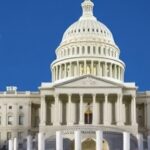Millions of Americans are gripped by fear as Health care costs prepare to skyrocket, with Affordable Care Act (ACA) subsidies slated to expire at the end of 2025. A bombshell survey from the Kaiser Family Foundation (KFF) reveals that nearly 48% of U.S. adults are “very worried” about affording health care in 2026, up from 42% last year. Already, one in four respondents report skipping doctor visits or medications due to soaring insurance premiums and out-of-pocket expenses, signaling a looming crisis in health care affordability across the United States.
This panic is not abstract: over 21 million people currently rely on enhanced ACA subsidies, which have kept marketplace insurance plans affordable since the American Rescue Plan Act of 2021 extended them through 2025. Without renewal, experts warn premiums could surge by 75% or more for middle-income families, potentially uninsured rates to pre-ACA levels and straining hospitals nationwide.
KFF Survey Exposes Alarming Trends in Health Care Worries
The KFF Health Tracking Poll, conducted in late October 2025 with over 1,200 adults, paints a stark picture of anxiety over Health care costs. 48% of respondents expressed high concern about affording insurance premiums next year, while 45% fretted over medical bills. Lower-income households (under $40,000 annually) showed even higher distress, with 62% worried about coverage lapses.
“We’re seeing a perfect storm,” said Larry Levitt, KFF executive vice president. “ACA subsidies have been a lifeline, capping premiums at 8.5% of income for many. Their expiration could price out millions from the insurance market.” The survey also highlighted behavioral shifts: 26% of adults delayed care last year due to costs, and 19% avoided prescription refills—a trend experts fear will accelerate without intervention.
- Key Survey Stats:
- 48% very worried about affording health insurance in 2026
- 45% concerned about unexpected medical bills
- 26% skipped needed medical care due to cost
- Democrats: 39% worried; Republicans: 55%; Independents: 51%
These figures underscore a bipartisan crisis in health care affordability, transcending political divides in the United States. Regional disparities are evident too: states like West Virginia and Kentucky, with high ACA enrollment, report worry rates exceeding 55%.
Real Lives Disrupted: Stories of Skipping Care Amid Rising Costs
Behind the numbers are harrowing personal tales. In Ohio, single mother Maria Gonzalez, 38, earns $45,000 yearly and credits ACA subsidies for her family’s marketplace plan at $320 monthly. “Without them, it’d jump to $750—more than my rent,” she told reporters. Gonzalez already rationed her diabetes meds last month, risking complications.
Similar stories echo nationwide. Texas retiree John Harlan, 62, skipped a colonoscopy due to a $2,500 deductible. “Health care costs are killing us,” he said. AARP reports 40% of adults over 50 fear subsidy loss will force tough choices between groceries and insurance.
Providers are feeling the pinch too. Dr. Emily Chen, a primary care physician in Florida, notes a 15% uptick in no-shows. “Patients say, ‘I can’t afford the copay.’ We’re heading toward an access crisis,” she warned. Emergency rooms, already overburdened, could see a 20% visit spike per Urban Institute projections if uninsured rates climb.
Impact on Vulnerable Groups
Children, chronic illness patients, and rural residents face outsized risks. The Children’s Health Insurance Program (CHIP) may buffer some kids, but families straddling income thresholds could lose dual eligibility. Cancer survivors like 52-year-old Lisa Patel from California report forgoing follow-ups, with one study estimating 1.2 million delayed screenings annually due to cost barriers.
- Low-income families: Premiums could double to 15-20% of income
- Rural areas: Fewer marketplace options, higher rates
- Chronic conditions: Medication non-adherence risks up 30%
These anecdotes humanize the data, illustrating how expiring ACA subsidies threaten not just wallets but lives in the pursuit of health care affordability.
ACA Subsidies Under the Microscope: A Timeline of Temporary Relief
Enacted in 2010, the ACA aimed to curb health care costs through marketplaces offering subsidized insurance. Pre-2021, subsidies aided only those below 400% of the federal poverty level (FPL)—about $58,320 for a family of four. The American Rescue Plan and Inflation Reduction Act supercharged them, eliminating the cap and aiding up to 9x FPL ($150,000+ for families), slashing uninsured rates to a historic 7.7% in 2024.
Enrollment boomed: 21.4 million in 2025 marketplaces, 80% subsidized. Average premiums fell 4% yearly under enhancements. But this golden era ends December 31, 2025, reverting to original rules unless Congress acts. “It’s a cliff,” said Sabrina Corlette, Georgetown University health policy expert. “Families earning $60,000 could see $12,000 annual premium hikes.”
State variations amplify the issue. Expansion states like California (2.5 million enrollees) contrast with non-expansion holdouts like Texas, where uninsured rates hover at 18%. CMS data shows subsidies saved enrollees $705 billion since 2021, but expiration looms as the largest coverage threat since Obamacare’s birth.
Political Firestorm Ignites Over Subsidy Extension
With midterm elections fading, Washington buzzes over ACA subsidies’ fate. Democrats, led by Senate Majority Leader Chuck Schumer, push a clean extension via reconciliation, citing popularity—85% approval in polls. “No family should lose coverage over politics,” Schumer tweeted.
Republicans counter with reforms. House Speaker Mike Johnson proposes work requirements and fraud checks, arguing subsidies ballooned costs. “We can fix Obamacare without bankrupting taxpayers,” he stated. GOP hawks like Sen. Rand Paul decry $100 billion annual expense, while moderates eye compromise.
Lobbyists swarm: AHA urges action to avert hospital closures; insurers like UnitedHealth warn of market instability. Bipartisan bills, like the Stable Affordable Coverage for Employees Act, gain traction but face slim odds pre-2026. Public pressure mounts—70% favor extension per KFF—potentially swaying lame-duck sessions.
Experts Forecast Insurance Chaos and Long-Term Fallout
Without extension, chaos awaits. Wakely Advisors projects 4-7 million marketplace dropouts, premiums rising 50-100% in some states. United States health care costs, already 18% of GDP, could inflate further via uncompensated care—$50 billion projected burden on providers.
Job markets may shift: employers delaying expansions fearing talent loss. Medicare-for-All advocates seize the moment, while free-market think tanks like Heritage push HSAs and competition. “This cliff underscores ACA’s flaws,” said Heritage’s Edmund Haislmaier.
Forward-looking, states explore bridges: New York’s excess-loss program stabilizes rates; others eye reinsurance. Federal options include short-term extensions or targeted aid. Insurers prepare rate filings—early birds like Blue Cross seek 20% hikes. Consumers urged to shop early, but experts like Cynthia Cox of KFF advise: “Compare plans now; affordability checks incoming.”
The path ahead hinges on Congress, but one certainty: expiring ACA subsidies will test America’s health care resolve, with millions’ futures in balance. Watch for December budget battles—relief or reckoning awaits in 2026.









